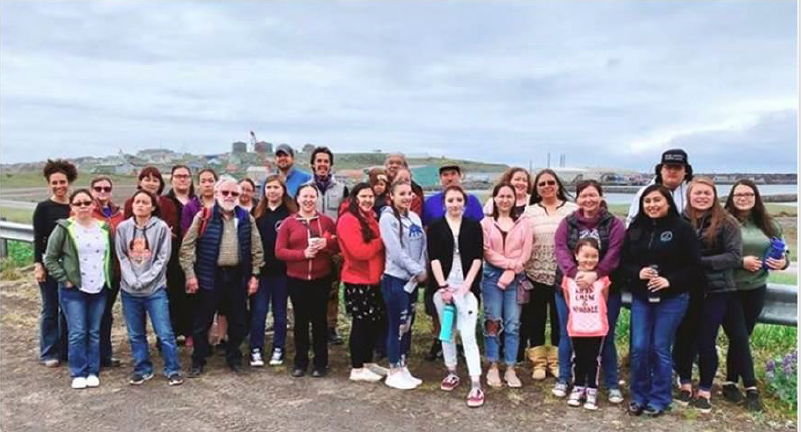St. Paul Island, Alaska Hosts Training by ADAI’s Healing of the Canoe Project
07/16/2019In June 2019, a team from the Healing of the Canoe (HOC) project traveled to remote St. Paul Island in the Pribilof Island chain in the Bering Sea in Alaska.
Dennis Donovan, PhD and Lisette Austin from ADAI, and Laura Price from the Port Gamble S’Klallam Tribe, were invited by the Traditional Healing and Behavioral Health programs to conduct a training on adaptation and implementation of the Healing of the Canoe curriculum. HOC is a culturally grounded life skills substance abuse prevention program that uses the Pacific Northwest Canoe Journey as a metaphor. The program provides Native youth the skills they need “to successfully travel their life’s journey without being pulled off course by alcohol or drugs, using tribal traditions, culture, and values both as a compass to guide them and an anchor to ground them.” An Alaska Native elder who heads the Traditional Healing program and a young man work with youth through baidarka (kayak) building), music, language, and traditional activities as a way of maintaining their culture and not letting it die. Five members from the community (including the young man and the city’s mayor) participated in the 2018 annual Canoe Journey which landed in Puyallup, WA, paddling with the Suquamish Tribe. They view the Canoe Journey as a model and a goal and hope/plan to have their baidarkas built and in the Journey in 2022 at the latest. The Healing of the Canoe, which they had already begun to adapt, is a key feature of their cultural revitalization work with their youth.

Healing of the Canoe has now trained over 460 people in 60 Tribal communities/18 Tribal organizations in how to adapt and implement the curriculum.
Dennis Donovan provided more about their visit to the remote community: “St. Paul Island is a volcanic island with tundra covering the ground. The open fields (of which there are many) were covered in lupine, which were beginning to bloom – quite a show in blues and purples! There are no trees on the island, no paved roads, no stop lights, one general store, and one gas pump (not a full-service station by any means!). A population of 468 (although the number living on the island fluctuates seasonally with halibut fishing and crabbing), with 58 kids in the school from pre-K through grade 12. The only restaurant is the employee cafeteria at the Trident crab/fish processing/packaging facility. The island is also known for its large population of seals; it was the seal fur trade that brought the Russians to the islands and that led to the Aleut members being enslaved by the Russians. There were a lot of “birders” with binoculars and huge-lens cameras as the island is known for its large number and variety of birds. They stay in the only hotel, which is essentially a barracks attached to the very small airport facilities. We stayed in tribal housing – from the outside it looked terribly run down and shabby but spotless and with new appliances on the inside. Our cell phones didn’t work; they have an on-island phone system and “outsider” phones can’t connect. Internet was sporadic at best. Most goods of any sort are brought in by plane or barge. Alcohol problems are fairly common and extensive, and despite its isolated nature drugs have infiltrated as well. It was an experience….!”





